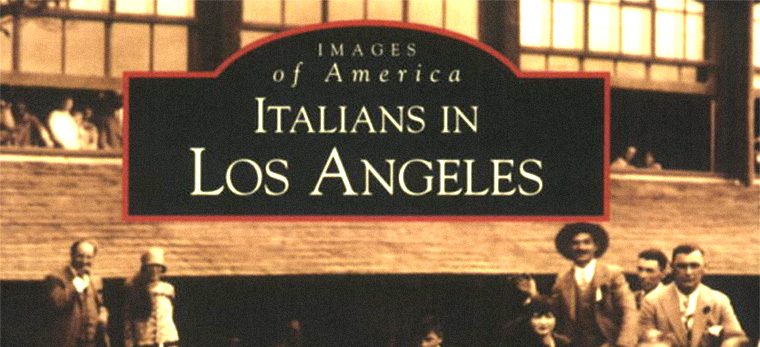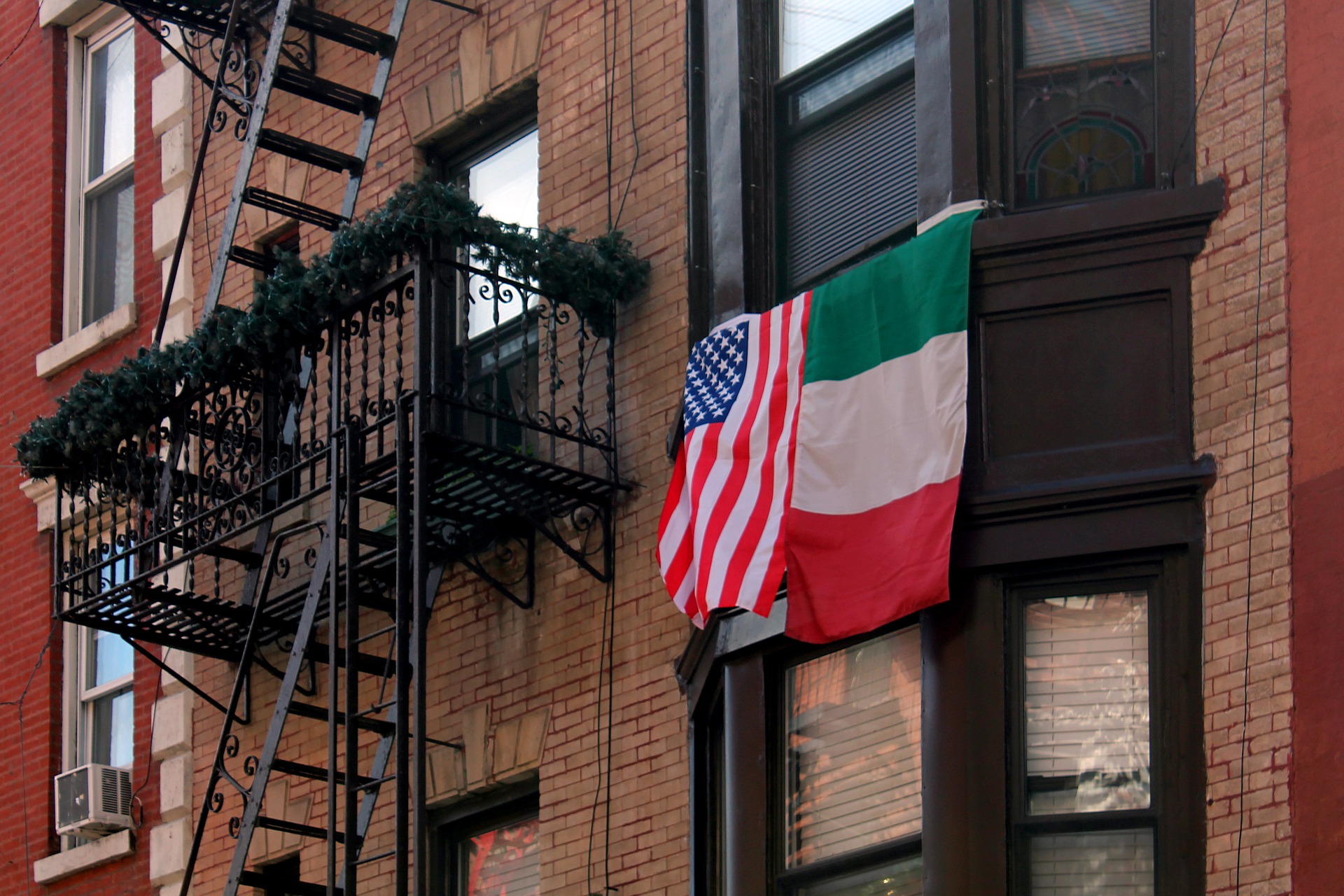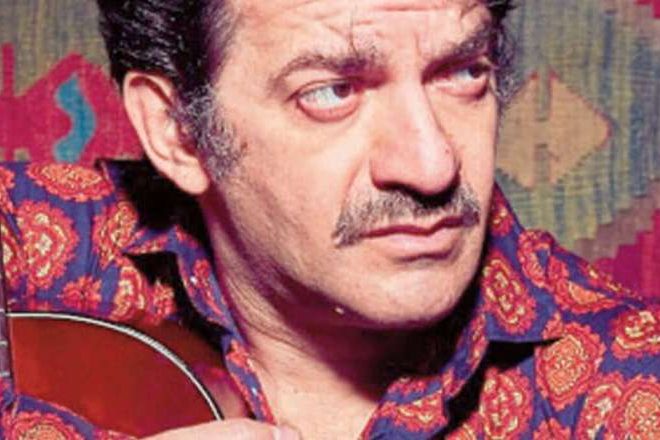In every family there is always someone, who patiently tries to sketch out the family tree. Marge Bitetti, author of the book Italians in Los Angeles, has done more than that. She has traced the origin of a whole population of Italian-American immigrants, who settled and thrived in the greater Los Angeles area and Southern California. Let’s hear together her fascinating stories.
First of all, we’d like to learn more about your background as an Italian-American.
I am a third generation Italian-American, born and raised in L.A. My grandfather, Vito Colombo (one of five siblings), emigrated from Sicily to Ellis Island, in the Upper New York Bay. From there, he moved to Detroit, then to Utah, where he worked as a coal miner, before settling in California. My grandparents started an Italian market/deli. My family shared the same property with them, so we lived all together as a multi-generational family for several years.
As far as education, I have a BA in Communication and Radio-TV Broadcasting from California State University Long Beach. Upon graduation, I was selected by the Academy of Television Arts & Sciences Foundation for their Summer Internship Program and luckily chosen as a documentary research intern for David L. Wolper Productions. During my internship, I worked on a documentary, titled Say Goodbye. That was in 1971 and the project earned a nomination for an Academy Award for Best Documentary Feature. Since it was before the age of Internet research, I had to learn research skills the old way: libraries, books, and stock film footage.
Moving forward, I earned a MA in Business Management with focus on Marketing from Webster University. Since then, I’ve been writing articles on architecture, design, and general interest for a few prestigious media outlets, the likes of L.A. Home & Décor, The Boston Globe and USA Today. In addition, I had nine books published.
Tell us about your book Italians in Los Angeles (2007).
Previously to that one, I had already written three books for Arcadia Publishing. I proposed the idea of Italian heritage in the greater Los Angeles Area and got approval to write the book.
Alongside an extensive research, I cultivated a rich networking of Italians and Italian-Americans living in the area. Some of the sources were invaluable, some others led to “dead ends.” Both the late Professor Gloria Ricci Lothrop, a historian who wrote about Italian-Americans in the West, and L.A. artist Paul Leo Politi, Leo Politi’s son, an award-winning producer and songwriter, certainly belong to the first category. St. Peter’s Italian Church, founded in Los Angeles in 1904, provided a wealth of photos and historic information for the book. The Bank of America also provided information and photos of two Italian-American entrepreneurs: Amadeo P. Giannini (1870-1949), who established the Bank of Italy in Downtown Los Angeles, which later became the Bank of America, and Joseph Francis Sartori (1858-1946), who was considered to be the dean of banking in Southern California. Another Italian-American pioneer, Frank J. Zamboni (1901-1988), was the inventor of a machine to resurface ice, which revolutionized indoor ice sports. The company’s world famous Zamboni equipment is still used worldwide to resurface at hockey rinks and other professional ice-skating facilities. I gathered precious information about Jimmy Kimmel’s Italian ancestry from people, belonging to his entourage. And I included also photos from the shoots of music videos by Italian-American filmmaker Dominic Orlando and producer Joseph Sassone.
Is there any particular story or anecdote from the book that stands out for you?
I learned that, during World War II, many Italians were sent to internment camps in other States, including Montana. Nearly 10,000 Italians were forced to move from coastal cities in California to inland locations. In San Francisco, Joe DiMaggio’s father, Giuseppe, couldn’t visit the family restaurant on Fisherman’s Wharf. As an enemy alien, he could not travel more than five miles without permission. A poster issued by the U.S. Government stated “Don’t Speak the Enemy’s Language,” indicating that people were discouraged from speaking German, Japanese and Italian. In 2010, the State of California apologized for mistreatment of Italian residents during WWII, expressing “deepest regret” for the wartime internment, curfews, confiscations and other indignities that thousands of Italian and Italian American families faced.
I also had the opportunity to meet the producer and a few staff members of the Jimmy Kimmel Show, as well as the late Dominick “Dom” DeLuise (1933–2009), actor, comedian, film director, television producer, chef, and author.
What’s the biggest challenge that you faced in your career?
Since I have spent many years as a freelance writer, one challenge has been the ongoing marketing needed to locate new assignments and clients. Being listed on the directory of the Author’s Guild, which I am a member of, has been helpful. In addition, being listed as a Southern California researcher on the website of the National Archives has been a major benefit in helping people to locate me and my services. The National Archives and Records Administration is the nation’s record keeper: documents and materials created in the course of business, conducted by the United States Federal government for legal or historical reasons, are kept by the Archives forever.
What’s your favorite type of writing? Do you have a literary model? And what are your favorites among the classics of world literature?
I have a taste for non-fiction, in particular short forms, like articles. My favorite phase and aspect of writing is the research behind it. As an author who has written reference books in my leisure time, I enjoy reading romance novels by Barbara Delinsky, because in her novels it is evident that she spends significant time researching her characters, situations and settings.
Talking about classics, I have many favorites. I started out in college as an English major so I got exposure to many greats works of literature. A few of these include: Othello and Macbeth by William Shakespeare, The Importance of Being Earnest by Oscar Wilde, Canterbury Tales by Geoffrey Chaucer, The Glass Menagerie by Tennessee Williams and my all-time favorite is Marty, a 1950s teleplay by Paddy Chayefsky.
Let’s have a quick look at your major writing works.
My latest work, written in conjunction with my husband, is The Aviation History of Greater Riverside (2013). Early Santa Ana (2006) and Norco (2005) are historical books, both of them published by Arcadia Publishing. Millennium Twenty-First Century Orange County Pioneer Publications, relates one hundred years of Orange County’s history. Pharmaceutical Marketing in Europe: Lessons from the US Smi Publishing Ltd., deals with the pharmaceutical history in America as it relates to Europe.
And what about your current/next projects?
I am a grant writer, working with non-profit organizations to find money. I’m also a researcher for hire, with a focus on tracing back people’s genealogy, through the National Archives. In addition, I’m actively involved in the church, as well as in social justice. In other words, I take part to every initiative in support of the underprivileged people. As far as my next writing projects, the first is a book about women murderers; the second aims to provide couples with plenty of topics to talk about.
Do you have any relations with the Italian-American community in L.A.?
I used to be a member of the Order Sons Of Italy, in Corona. Unfortunately, the local lodge broke apart a few years ago. Notwithstanding, I am still in contact with several people that I met through this organization.





























